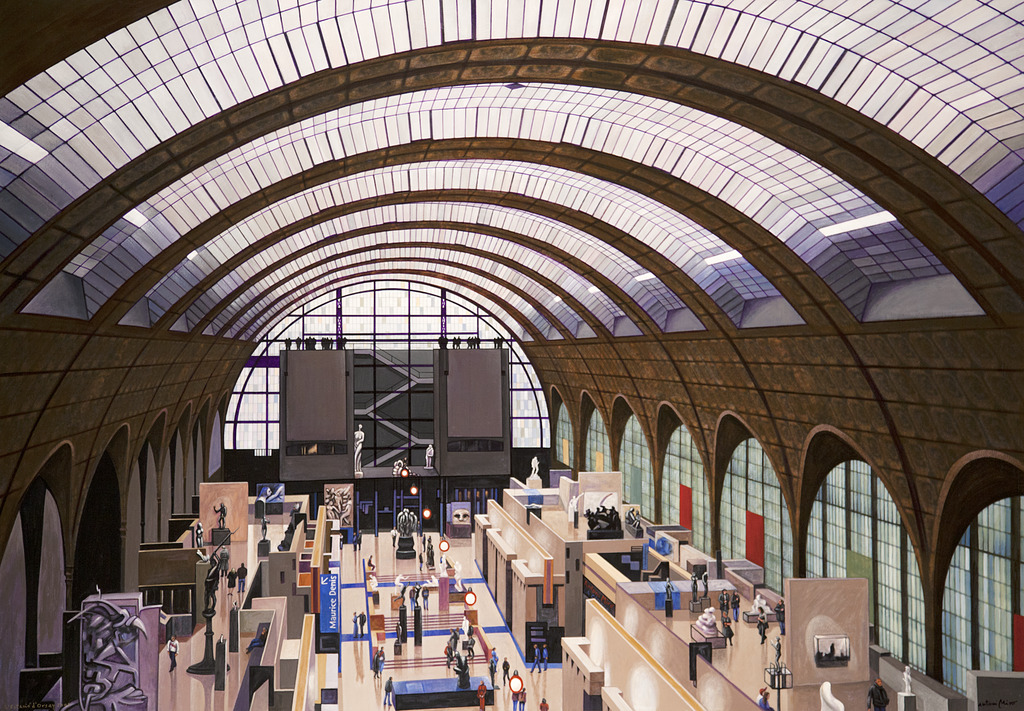L’estació d’Orsay (Gare d’Orsay)
In Antoni Miró’s series on museums, the artist reflects on whether these institutions continue to fulfil through their founding mission as repositories of cultural materials from the past, articulating these within a given narrative. Yet he also questions the protagonism of a museum building, which in principle is no more than a container for cultural contents. It is not by chance that Miró titles this work L’Estació d’Orsay [Gare d’Orsay, or Orsay Station], alluding to the unavoidable presence in this museum of the reminiscence of its previous use. Wences Rambla put it thus: “Miró therefore questions, with his approaches and iconographic cut-outs, the institutional or political structures that take part in exhibitions and museums”.
In this case, Miró’s work depicts the large open-plan nave housing the museum’s sculpture collection. The Classicism of the pieces exhibited here contrasts with the technological innovation that the railways represented in 19th Century Europe and the huge social changes that accompanied them, even though these circumstances are contemporary.
The vaulting consists of a series of delicate broad-span arches punctuated by large skylights. The lateral windows of the Main Hall are also arched but the texture of the blinds is simplified to lessen the visual impact of the decorative panels. By contrast, the transparency and shading of the window and skylight panes are painted in great detail. This gives the interior a light ambience. The stone-faced dividing walls and the zigzag staircase at the end wall are accurately depicted and the lighting intensified in some areas.
The sculptures are presented simply, and in many cases altered in both meaning and shape. For example, the sexual organs of many of the statues stand out. The celestial sphere is missing from the upper part of Carpeaux’s Les quatre parties du monde soutenant la sphère céleste [The Four Corners of The World Supporting The Celestial Sphere]. Meanwhile, in Fremiet’s statue of Saint Michel terrassant le dragon [Saint Michael Slaying The Dragon], the saint has shed his wings and is holding a rifle with a fixed bayonet instead of a sword. In short, none of the works of art is depicted with the same realism as that lavished on the building containing them.
In addition to these changes, the author adds a dash of humour to a poster that indicates an exhibition of his paintings on the ground floor, together with those of Maurice Denis, one of Les nabis [‘The Prophets’]. The blind parts of the window arches along the sides of the building are coloured to provide a counterpoint to the general colour uniformity, enriching the overall impact of the piece.
All these ironic touches go unnoticed at first glance. This reflects Miró’s belief that access to culture involves careful examination of what a museum exhibits. In this painting, the recreation of an apparently accurate ambience may be linked to a complete fake that removes us from reality at its essential nature.
As Fernando Castro warns us, this is not a “documentary series” but rather “an inquiry into the type of experience” that, unfortunately, tends to be delivered by the “logic of tourism”.
Santiago Pastor Vila
